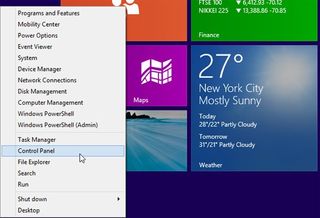

- #Default folder x 5 compatibility mac os#
- #Default folder x 5 compatibility drivers#
- #Default folder x 5 compatibility update#
If the RStudio IDE is not able to locate R by scanning these locations, it will fall back to using whatever version of R is located at /Library/Frameworks/R.framework/.

In order to support these variations, RStudio scans for the R executable in the following sequence: However, if R is installed directly from source or via a package manager like MacPorts or Homebrew, then the R executable is installed to either /usr/local/bin/R (Homebrew) or /opt/local/bin/R (MacPorts). When R is installed from CRAN on OS X, the R executable is installed at /usr/bin/R. R from source (including MacPorts and Homebrew)
#Default folder x 5 compatibility update#
#Default folder x 5 compatibility mac os#
On Mac OS X, if the only version of R you have installed is the standard R distribution from CRAN, then by default the RStudio IDE will run against the current version of R.Framework. Note that by holding down the Control key during the launch of RStudio you can cause the R version selection dialog to display at startup. This dialog allows you to specify that RStudio should always bind to the default 32 or 64-bit version of R, or to specify a different version altogether: You can override which version of R is used via General panel of the RStudio Options dialog. This is the version of R which RStudio runs against by default. When R is installed on Windows it writes the version being installed to the Registry as the "current" version of R (the specific registry keys written are described here). On Windows, the RStudio IDE uses the system's current version of R by default. The way this occurs varies between platforms-this article covers how version selection is handled on each platform. Since R versions can be installed side-by-side on a system, RStudio needs to select which version of R to run against. Therefore, the following method would write to storage/app/example.The RStudio IDE requires R version 3.0.1 or higher. By default, this value is set to the storage/app directory. When using the local driver, all file operations are relative to the root directory defined in your filesystems configuration file. You may configure as many disks as you like and may even have multiple disks that use the same driver. The local driver interacts with files stored locally on the server running the Laravel application while the s3 driver is used to write to Amazon's S3 cloud storage service. Example configurations for each supported driver are included in the configuration file so you can modify the configuration to reflect your storage preferences and credentials. Each disk represents a particular storage driver and storage location. Within this file, you may configure all of your filesystem "disks". Laravel's filesystem configuration file is located at config/filesystems.php. Even better, it's amazingly simple to switch between these storage options between your local development machine and production server as the API remains the same for each system.

#Default folder x 5 compatibility drivers#
The Laravel Flysystem integration provides simple drivers for working with local filesystems, SFTP, and Amazon S3. Laravel provides a powerful filesystem abstraction thanks to the wonderful Flysystem PHP package by Frank de Jonge.


 0 kommentar(er)
0 kommentar(er)
